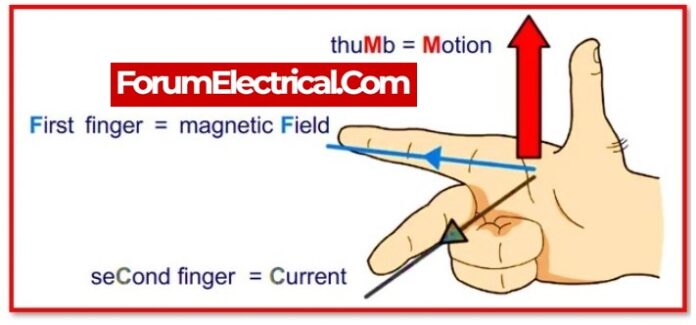Fleming’s Right-Hand Rule is a principle in electromagnetism that describes the relationship between the direction of the current in a conductor, the direction of the magnetic field around the conductor, and the direction of the force on the conductor.
Fleming’s Right-Hand Rule states that if the thumb, index finger, and middle finger of the right hand are pointed in the direction of the current, the direction of the magnetic field, and the direction of the force on the conductor, respectively, then the fingers will curl in the direction of the force.
To use Fleming’s Right-Hand Rule, follow these steps:
Hold your right hand out with the thumb, index finger, and middle finger extended.
- Point the thumb in the direction of the current in the conductor.
- Point the index finger in the direction of the magnetic field around the conductor.
- Point the middle finger in the direction in which the force on the conductor is expected to act.

What is another term for Fleming’s right-hand rule?
Fleming’s right hand is also known as generator rule. It specifies the direction of the induced current generated by a straight conductor flowing in a magnetic field.
Applications of Fleming’s Right-Hand Rule:
Fleming’s Right-Hand Rule is often used to predict the direction of the force on a conductor in the presence of a magnetic field.
It is particularly useful for understanding the behavior of motors and generators, which rely on the interaction between currents and magnetic fields to produce motion or electrical power.

The Right-Hand Rule is named after the British scientist John Ambrose Fleming, who first proposed it in the late 19th century.
It is one of several similar rules that are used to predict the behavior of currents and magnetic fields in various situations.









